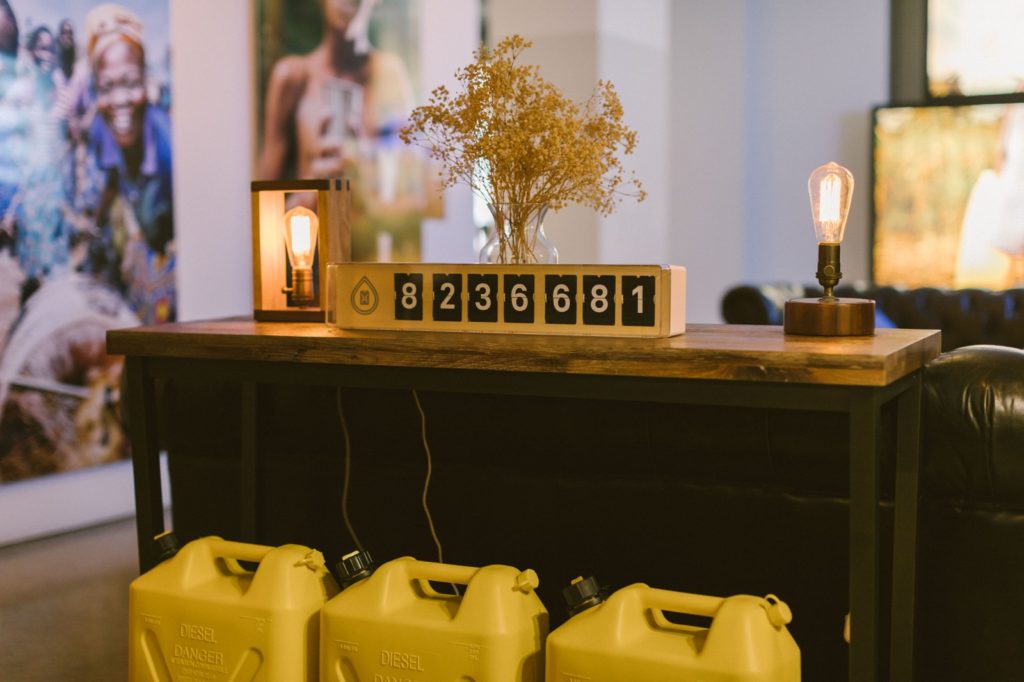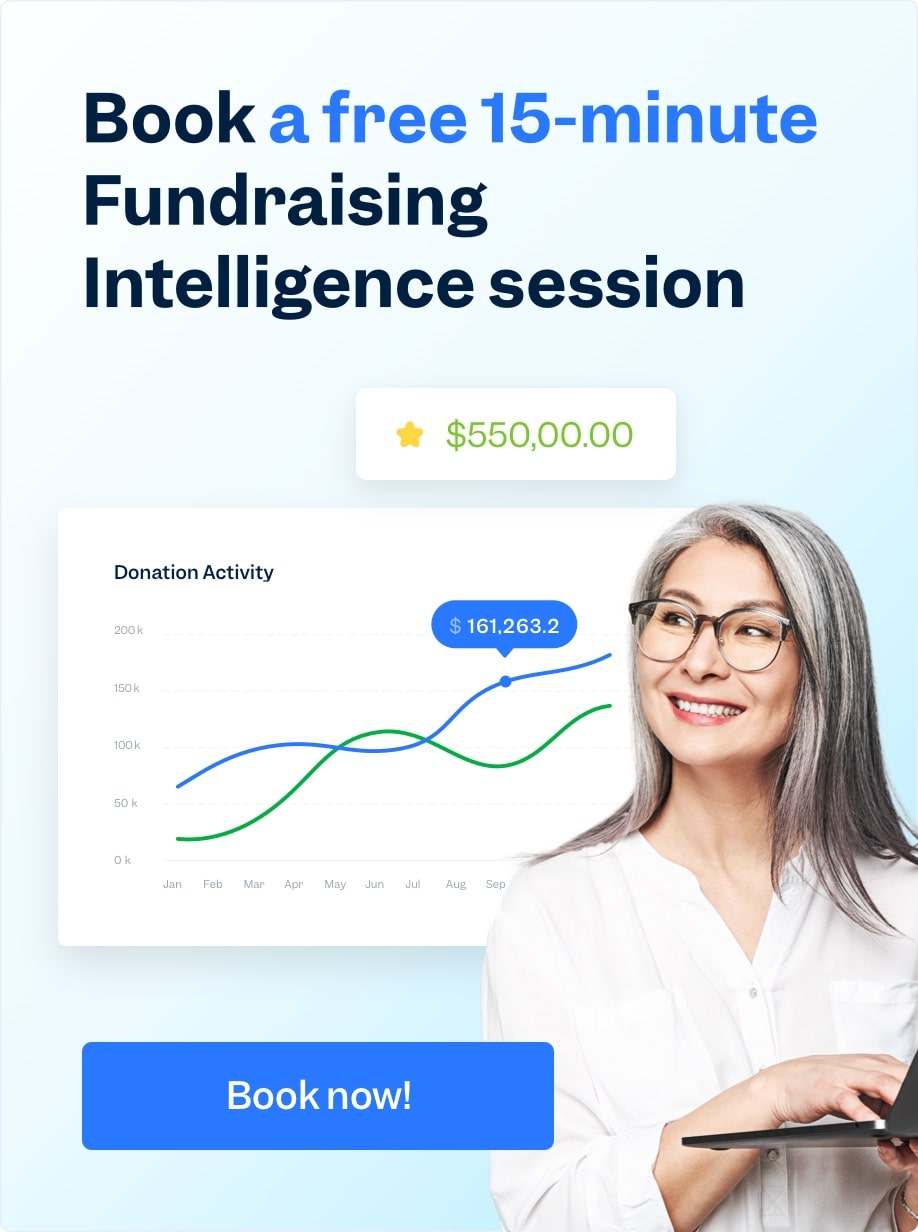You already know why a recurring giving program is so important to your organization, but do you know how to get started?
What are the most critical components? How do you measure your program's success? Tyler Riewer, charity: water's Brand Content Lead and Funraise's own CEO, Justin Wheeler, sat down to discuss building and maintaining a recurring donor program and engaging your donors to increase loyalty, reduce attrition, lower operation costs, and establish a more predictable revenue stream. Their conversation is available on demand—Listen now!
There were so many thoughtful questions during the Q&A that we weren't able to answer them all. We found that many of you had similar questions so we have consolidated duplicates.

Q: We’re trying to make our monthly donor program more interactive with campaigns or competitions, things like that. What would you recommend? Have you tried this before?
Tyler: We haven’t really tried campaigns within the monthly giving program. Late last year, we directed November Spring donations to a specific grant in Rwanda so we could share that story and take the group on a journey. But that wasn’t necessarily interactive. The only other thing that comes to mind is a referral program we’re trying to build right now. It’s an existing feature for Spring members already, but we want to try to gamify it a bit more—show your personal impact alongside the impact of people you’ve inspired to join. Maybe create a leaderboard and add some badges that celebrate the best ambassadors.
I don’t think I really answered the question as far as recommendations go… I guess at a high level, I’d say focus on interactive experiences that are more for your audience than for you.
Justin: This is going to depend on your staff and their bandwidth. If your staff is small and resources are thin, it may not be sustainable to offer, say, a monthly competition. But there are alternate ways to keep supporters engaged that requires less work for your staff! Whatever engagement avenue you choose, look at sustainability and scalability. If your competition has a lot of manual elements or requires staff attention, you might be able to keep it functional for a small number of donors—but think of next year when you have double or triple that number. You won’t want to disappoint your early donors by eliminating these fun elements, so keep an eye on scalability.
An idea that I like for an incentive-based monthly giving program focuses on donor tiers. A sustainable approach could be to offer different items for each monthly level within your program. Don’t make it too gimmicky and instead focus on products that tell your story and promote your mission.

Q: You mentioned feeling like donors have a role and a part in the impact when you allow them behind the scenes. How do you do this?
Tyler: One of my favorite ways we’re pulling back the curtain is through an exclusive video series for The Spring, called The Journey. It’s locked content that speaks directly to Spring members' impact—the communities they’re serving, the local partners they’re putting to work. It’s a chance for us to take our members to different countries and talk about what makes charity: water work in each place unique or exciting. Make them feel invested. Introduce them to the people, culture, etc that make this so much fun.
Justin: I’d add that personalization is critical. Even though most of us know logically, that when our name appears in an email, it’s a merge field that was automatically populated. Still, when you open a personalized email that says “Hey Justin—you helped this thing!”, it feels great because I know they’re talking to me. Find ways to personalize or individualize your impact reports and communications.
Depending on your org and the data you collect, you may even be able to thank donors on your social channels. Public recognition for our good deeds makes us feel warm and fuzzy inside. Plus, when someone receives a personalized, congratulatory message on social media, they’re very likely to share it. This is great (and free!) publicity for your cause, a recommendation from a trusted source (which increases new donors’ propensity to take action), and info not just about the good works that you do, but also proof that you care about your donors. This idea is great for brand-building and positive PR.

Q: When inviting one-time donors to join the monthly recurring program, do you initially ask them to give at a specific amount per month or do you leave it open-ended? If the former, what formula do you use to determine the amount?
Tyler: We’ve A/B tested this extensively and now always open with a $60/month pre-filled ask. It’s just the number that’s been the most successful out of all our testing!
Justin: In our experience, we’ve seen a number of organizations who make a suggested donation amount that donors can adjust. This amount could be determined by program; for example, if your program goal is $120,000/year and you have 100 steady donors, you could suggest an amount starting at $100/month. Your ask should include the details on why that amount was selected: “$120,000 per year allows us to provide services to 100 students. Your contribution of $1,200 will allow one student access for an entire year!” Being able to see the impact of their individual donation allows the donor to weigh the impact and feel proud of the impact that they—as just one donor—can make.
Q: How do you segment your recurring donors?
Tyler: Again, this is something we’re working to get better at. I think there are two big ways we draw lines with our audience… one is around giving amount and the other is around engagement.
I don’t think the amount someone is giving at should change the way you talk to them, but it should change the way we talk about the significance of their impact. There’s an important distinction there. For the engagement piece, it’s about your experience. We know there are people who value lots of communication and people who don’t want emails piling up in their inbox. All of this is about retention and putting your audience first!
Justin: Depending on your size and how big your team is, start by segmenting between one time and recurring donor—You want to speak more frequently with your recurring donors so they stay engaged and inspired. When I was at Liberty in North Korea, we didn’t segment our recurring donors by gift size; we tried really hard to understand what our donors cared about so that we could be more specific with how we communicated. It was a bit hard to scale, but I think it was one of the main reasons we had an above average recurring donor lifecycle, even though we were working mostly with high school and college students.
We, as consumers, share less of the stuff we’re asked to share and more of the stuff that makes us feel incredible (and might make other people feel incredible too).
Q: Do you use your monthly donors to recruit other monthly donors? If so, how do you encourage that?
Tyler: I mentioned our referral program above. That’s one way. But I think it’s simpler than that. The best thing we can do is build a product and an experience that people want to share and then make it as easy as possible to do the sharing. That might be a custom referral link. It might personalized social content. It might be a video made just for you from our trip to Rwanda. We, as consumers, share less of the stuff we’re asked to share and more of the stuff that makes us feel incredible (and might make other people feel incredible too).
Justin: To reiterate what I’ve said before, social media is a great avenue for this. You can ask donors to “give” one more time by posting about it on their social media channels. Since it costs them nothing and gives them the warm fuzzies to promote a cause they care about, they’re likely to take action—and that recommendation can influence others in their social circles to join your cause.

Q: What advice can you give to increase the amount that your recurring donors are giving? Are there specific tactics that have been successful for charity: water?
Tyler: I wish I had an answer here. This is something we’re trying to figure out as well. We’ve been so focused on acquisition and retention that we haven’t thought much about upselling. My gut says there’s opportunity around milestones and anniversaries. And probably tons of potential with anyone who has donated more than once to your organization. But I’ll have to report back on this one!
Q: Do you have different strategies for converting one-time donors at different levels into recurring donors?
Tyler: Less so with a mass/online audience. We have a welcome series that you go through via email as a one-time donor that introduces The Spring in a few ways (an investment in a better world, a community of people working to solve this problem, etc).
But we're starting to rethink major donor opportunities (people sponsoring $10,000 water projects). We’re hoping to find a way to provide them a Spring-type experience and encourage repeatability there as well.
Q: How many people make up The Spring? Are they all giving at $30/ month or does it vary?
Tyler: There are currently 22,405 Spring members from more than 90 countries around the world. Some give as little as $10/month and others as much as $4,000/month, but the average amount comes out to $30.10.
Q: How much is a well?
Tyler: Water project sponsorship costs vary depending on the country and solution. Typically, we say $10,000 to $25,000.

Q: How often do you communicate with The Spring monthly donors?
Tyler: Several times each month! Spring members receive a “Good News” email (highlighting a story of impact from around the world) from us on the day their monthly donation is processed. They also get additional emails when we launch a new season of The Journey, want to share real-time video updates from the field, or highlight members of The Spring community.
Q: Which types of interactions have been the most/least successful when it comes to soliciting donations?
Tyler: The 20-minute film we made to launch The Spring continues to drive an incredible amount of traffic! It’s just a great way to summarize where charity: water came from and how we hope to solve the water crisis in our lifetime (which is this community).
The other big driver we’ve seen are talks and podcasts, etc. I think being able to talk about the program in person makes it so real and authentic. It changes from a “monthly giving program” to a “passionate community of world-changers who want to stand proud on the day we can say everyone in the world drinks clean water.”
Q: How involved is your Board of Directors in recruiting recurring donors? Are they involved with The Spring group and managing those relationships?
Tyler: They’re ambassadors of the program, just like we are! But I think the most value they bring is on the strategy side. Our Board has an incredibly valuable range of experience and provides great feedback and ideas around the product itself.













































.webp)
.webp)

.webp)
.webp)
.webp)




